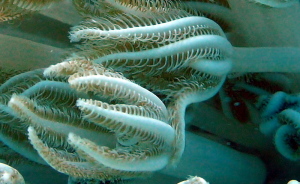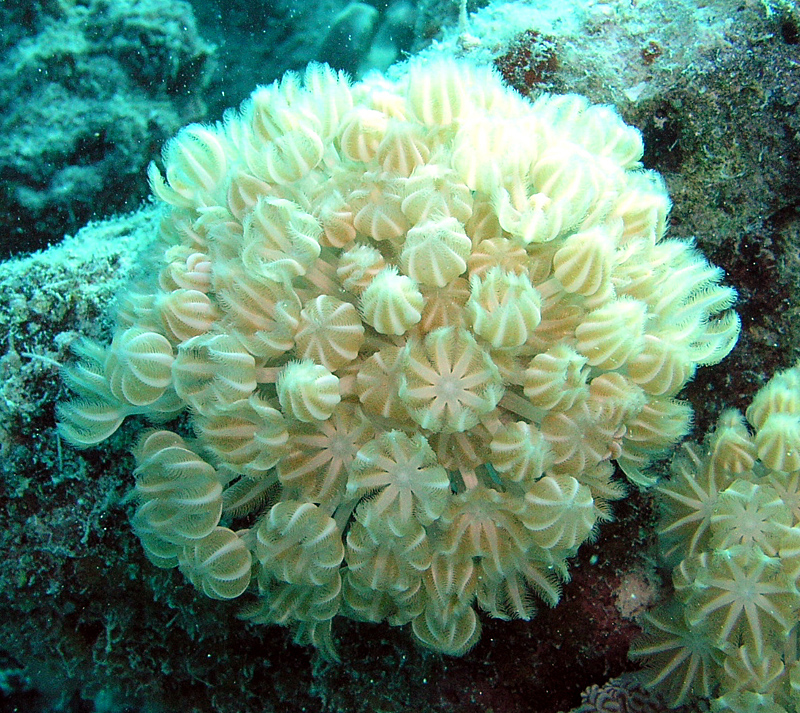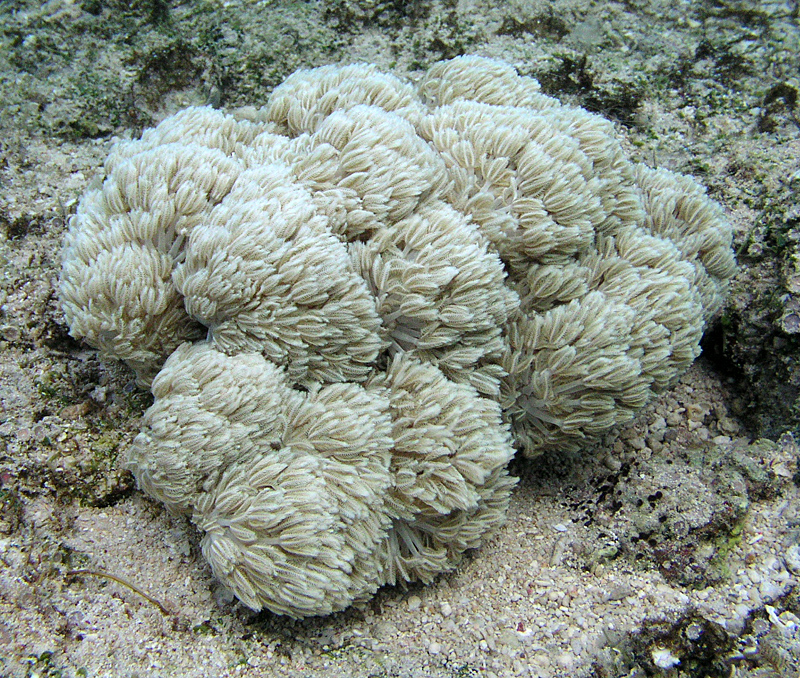�
�
�
���
Xenia
(2)
Kingdom
Animalia
Phylum
Cnidaria
Class
Anthozoa
Order
Alcyonacea
Family
Xeniidae
Genus
Xenia
Distinguishing features
Colonies consist of small mounds up to 4cm diameter, with distinct large polyps on long stalks. Polyps are monomorphic and non-retractile, and may pulse rhythmically. Colonies are usually white, cream, or pale brown.
Size
- Size data has not been obtained.
Synonyms
Distribution and habitat preferences
Reef flats and front slopes with good water movement.
Can be found in most reef habitats around Lizard Island.
Behaviour
Xenia sp(p). are known to have high concentrations of toxic organic compounds, which deter predators and also inhibit settlement and competition from other benthic organisms. The Xeniid corals brood their planula larvae internally, and release larvae over many months of the year, in contrast to the alcyoniid soft corals which are synchronised broadcast spawners.
Web resources
References
- Alino, P.M. and J.C. Coll (1989). Observations of the synchronized mass spawning and post settlement activity of octocorals on the Great Barrier Reef, Australia: biological aspects, Bulletin of Marine Science, 45(3): 697-707.
- Fabricius, K.E. (1997). Soft coral abundance on the central Great Barrier Reef: effects of Acanthaster planci, space availability, and aspects of the physical environment, Coral Reefs, 16(3): 159-167.
- Fabricius, K. and P. Alderslade (2001). in: Soft corals and sea fans: a comprehensive guide to the tropical shallow water genera of the central-west Pacific, the Indian Ocean and the Red Sea. Australian Institute of Marine Science, Townsville.
- View all references




